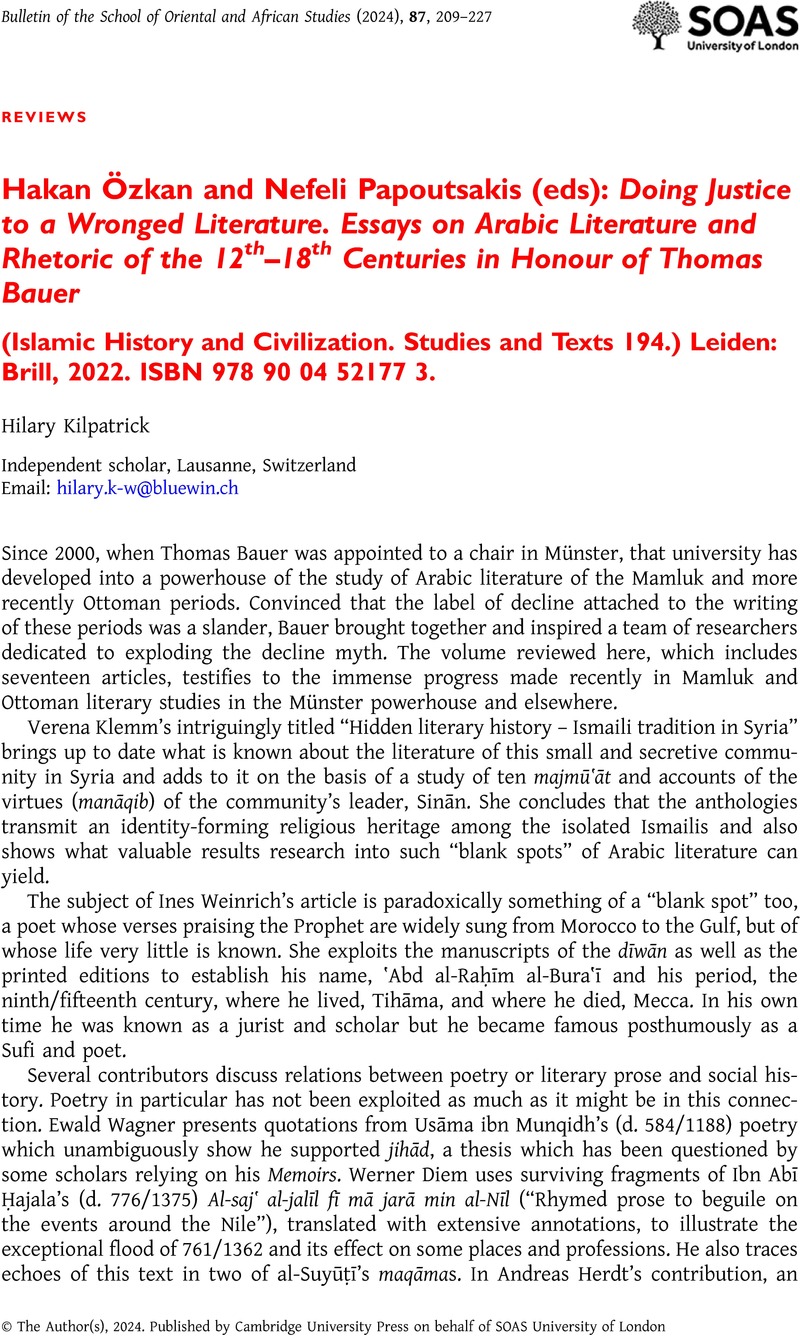No CrossRef data available.
Article contents
Hakan Özkan and Nefeli Papoutsakis (eds): Doing Justice to a Wronged Literature. Essays on Arabic Literature and Rhetoric of the 12th–18th Centuries in Honour of Thomas Bauer (Islamic History and Civilization. Studies and Texts 194.) Leiden: Brill, 2022. ISBN 978 90 04 52177 3.
Review products
Hakan Özkan and Nefeli Papoutsakis (eds): Doing Justice to a Wronged Literature. Essays on Arabic Literature and Rhetoric of the 12th–18th Centuries in Honour of Thomas Bauer (Islamic History and Civilization. Studies and Texts 194.) Leiden: Brill, 2022. ISBN 978 90 04 52177 3.
Published online by Cambridge University Press: 01 March 2024
Abstract
An abstract is not available for this content so a preview has been provided. Please use the Get access link above for information on how to access this content.

- Type
- Reviews
- Information
- Copyright
- Copyright © The Author(s), 2024. Published by Cambridge University Press on behalf of SOAS University of London



